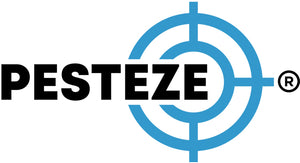RODENT CONTROL FOR APARTMENTS AND RENTAL HOMES

RODENT CONTROL FOR APARTMENTS AND RENTAL HOMES
SUMMARY
Rodents can spread quickly in shared living spaces, making apartment and rental homes especially vulnerable. This guide covers effective rodent control methods for tenants and landlords to keep properties pest-free.
FEATURES
-
Identify Entry Points: Seal cracks, gaps, and utility lines.
-
Proper Food Storage: Use airtight containers and clean regularly.
-
Trash Management: Keep garbage sealed and disposed of frequently.
-
Landlord Responsibilities: Structural repairs and pest prevention.
-
Tenant Responsibilities: Sanitation and early reporting of problems.
-
Professional Pest Services: Integrated solutions for multi-unit buildings.
DESCRIPTION
Rodents pose unique challenges in apartments and rental homes because infestations can spread rapidly between units. Shared walls, ceilings, and utility lines make it easy for mice and rats to move from one apartment to another. Effective rodent control in these spaces requires cooperation between tenants and landlords, along with proactive prevention.
The first step is identifying and sealing entry points. Cracks in walls, gaps around plumbing, or holes in the foundation allow rodents to enter and spread. Landlords should ensure building exteriors are secure, while tenants should check for small gaps within their units and report issues promptly. Using caulk, mesh, or weatherstripping helps block access.
Food storage plays a critical role. Apartments often have limited kitchen space, but storing food in airtight containers and cleaning regularly reduces the risk of attracting rodents. Pet food should also be stored securely and not left out overnight.
Trash management is another important factor. Shared garbage rooms or dumpsters can become hotspots for rodent activity if not maintained. Tenants should always tie bags securely and dispose of trash promptly, while landlords should provide pest-proof bins and ensure frequent collection.
Both landlords and tenants share responsibility. Landlords must handle structural repairs, schedule pest inspections, and address infestations quickly. Tenants should maintain sanitation within their units, avoid clutter, and report early signs of rodents such as droppings or gnaw marks.
For severe infestations, professional pest control services are often necessary. Multi-unit buildings benefit from integrated pest management (IPM), which combines sealing, trapping, and monitoring strategies across the entire property. Coordinated action ensures the infestation is controlled building-wide rather than just shifting from unit to unit.
By working together on sealing, sanitation, trash management, and professional services, both tenants and landlords can successfully manage rodent control in apartments and rental homes.
- Saharsh Bansal


Comments 0